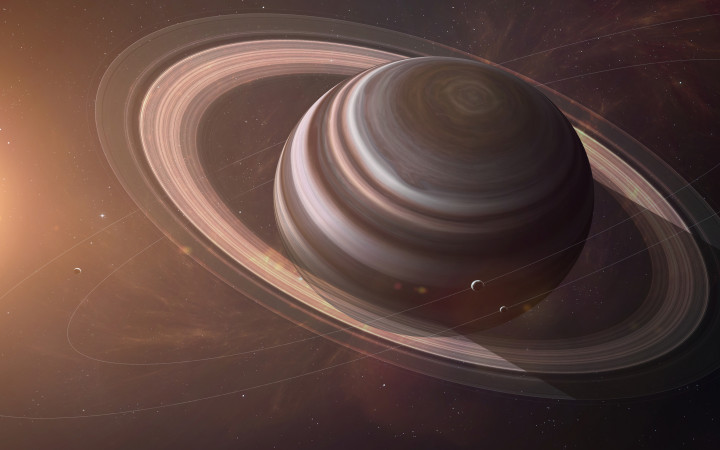Today’s Wonder of the Day was inspired by Melanie. Melanie Wonders, “How many moons does Saturn have?” Thanks for WONDERing with us, Melanie!
Can you identify all of the planets in our solar system? Sure, many of our Wonder Friends could probably list all of the planets. They may even be able to put them in order of distance from the Sun.
But what if we cut out pictures of the planets and mixed them up? Could you name the planets by sight alone? We bet you could identify Earth, since that’s home. The other planets, though, probably wouldn’t be quite so easy.
There’s one planet we’re sure everyone would quickly identify on sight. Its signature rings give it away almost immediately. Have you guessed which planet we’re talking about? It’s Saturn!
Saturn is unique in many ways beyond its rings. After all, Saturn isn’t the only planet with them. No other planet has such magnificent and complicated rings as Saturn, though.
After its neighbor Jupiter, Saturn is the second largest planet in the solar system. Like Jupiter, Saturn is made up mostly of hydrogen and helium. That’s why these two planets are known as gas giants.
If you hope to one day fly to Saturn and walk on its surface, you’re going to be disappointed. As weird as it may seem, Saturn doesn’t have a hard surface you could walk on like Earth has. Instead, it’s outer “surface” consists of layers upon layers of gases.
On average, Saturn sits about 886 million miles from the Sun. It is the farthest planet that can be seen from Earth by the naked eye. We’ve known about Saturn since the times of ancient astronomers, such as Galileo. However, human knowledge of the planet has been limited until recently.
Over the past two decades, scientific knowledge of Saturn has grown thanks to two missions. In 2004, NASA’s Cassini spacecraft became the first craft to orbit Saturn. It carried out a decade-plus mission to study Saturn and its moons. In 2005, the European Space Agency’s Huygens probe successfully landed on Saturn’s giant moon, Titian. It sent back important data about Titan’s atmosphere and surface during its descent.
Saturn itself would not be a hospitable planet for humans to live on. Still, scientists have long WONDERed whether one of its moons might be able to support life. To date, scientists have confirmed 53 moons orbiting Saturn. Another 29 possible moons have been identified and are still being studied.
Saturn’s moons appear to have some truly fascinating landscapes. One example is cloud-covered Titan. It is the second-largest moon in the solar system. It’s larger than the planet Mercury! This moon features lakes of methane.
Perhaps the greatest mystery surrounding Saturn today is the jet stream around its north pole. A jet stream itself isn’t strange. After all, Earth has jet streams. Saturn’s jet stream at its north pole is quite unique, though. It forms a perfect hexagon about 20,000 miles across. Its winds exceed 200 miles per hour!
NASA’s Cassini spacecraft was able to study the hexagon in both infrared and visible wavelengths. Scientists aren’t any closer, though, to figuring out how and why it occurs.
On Earth, surface features such as mountains can cause bends in the jet stream. There are no similar structures on Saturn, however. So what causes such a perfectly-symmetrical six-sided jet stream at Saturn’s north pole? Maybe you’ll grow up to be a scientist who will solve the mystery one day!
Standards: NGSS.ESS1.A, NGSS.ESS1.B, CCRA.L.3, CCRA.L.6, CCRA.R.1, CCRA.R.2, CCRA.R.4, CCRA.R.10, CCRA.SL.1, CCRA.SL.2, CCRA.W.2, CCRA.W.4, CCRA.W.9, CCRA.L.1, CCRA.L.2





